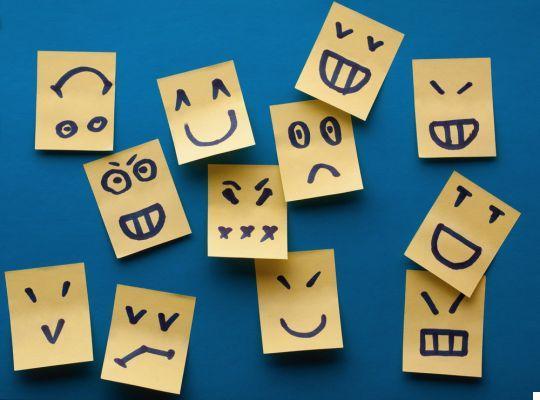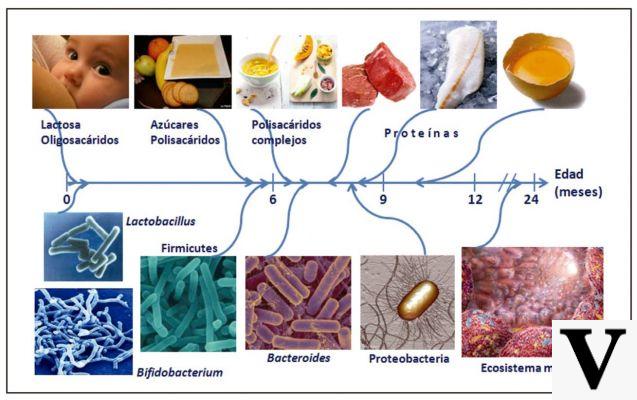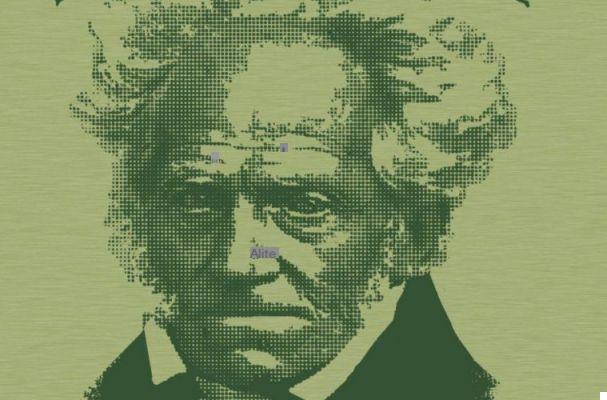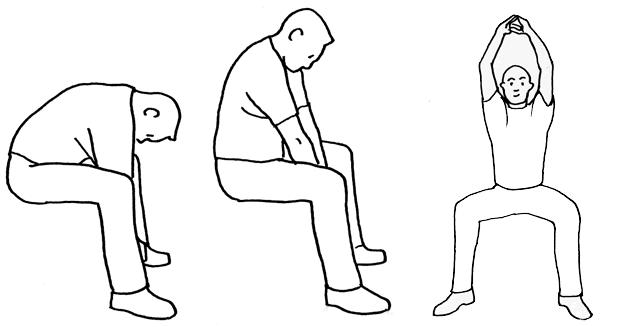
We all have different emotions and feelings. The human affective sphere is extremely varied. However, we are not always able to give a name to what we feel. We all feel emotions, but not all of us are able to recognize and manage them.
In fact, there are people who have very limited emotional self-knowledge because, although they experience a wide range of emotions, they are unable to recognize them precisely. Obviously, not knowing what emotions or feelings we are experiencing is an impediment to managing them in the most appropriate way.
Instead, knowing all the emotions and feelings will allow us to sharpen our emotional awareness. If you only know one or two musical notes, they will be the only ones you will hear as you will pay more attention to them. If you know them all, your musical universe will expand. The same happens at the level of feelings and emotions.
A study conducted at George Mason University revealed that people who are able to detect and understand their emotions are less likely to use drugs, alcohol or food as escape routes.
Other studies done at the University of Kansas went further, delving into the impact of emotional self-regulation on a physical level. These researchers found that people with cancer who could detect, label and understand their emotions had lower levels of inflammation, a process that is at the root of this disease and is considered a poor prognosis.
Neither the feelings are that emotional nor the thinking is that rationalWe tend to think that emotions and thinking are antagonistic processes that are mutually exclusive. But the truth is that in every emotion there is a pinch of reason and in every thought there is a bit of feeling.
Although we act guided by the emotions we are experiencing at that moment, in reality we are also reacting to a complex mental process that occurred in the background: the cognitive interpretation we made of the event.
The truth is that we don't react to reality, but rather to the meaning we give to it, and in that case it affects everything from our expectations and needs to our thoughts. Therefore, emotions are not simply reactions to the environment, but also to the assessment we make of what is happening to us.
For example, if a person spills a glass of water on us, the most normal emotional reaction would be surprise because it is an unexpected event. But when we start thinking about that person's intentions and our rational mind kicks in, we can react with anger, thinking that he did it on purpose. Therefore, anger is not an emotional reaction to what happened, but to our interpretation of it.
What is the difference between emotions and feelings?Knowing the difference between emotions and feelings is not a mere epistemological or linguistic exercise, it will help us to better understand our reactions and behaviors, allowing us to regulate our affective responses to achieve greater well-being.
What are emotions? They are reactions of affective value to certain stimuli, which can be external, something we see or experience, or internal, such as a thought or a memory. Emotions trigger a series of hormonal and neurochemical responses that produce a state of activation, prompting us to take immediate action. They are usually relatively fleeting experiences that generate a high degree of pleasure or displeasure.
When they give us terrible news, such as the death of a pet or a loved one, for example, it is an emotion that is activated. In this type of situation, our reaction is almost automatic and difficult to control, so we will feel very sad and we will also likely cry.
What are feelings? Feelings elicit the same physiological and psychological responses as emotions, but they have a built-in conscious evaluation. In other words, they imply awareness and appreciation of the underlying emotion and affective experience we are having. They also tend to be more stable over time.
As the days go by, emotions fade to give way to feelings as a cognitive interpretation of the state occurs. In the case of bad news, for example, the feelings that sadness leaves are usually: pain, melancholy, emptiness, restlessness, discouragement or even anger.
Therefore, the main differences between emotions and feelings are:
- Duration. Emotions are transient states that come and go relatively quickly. The feelings, on the other hand, have been more stable over time. Joy, for example, is an emotion, while love is a feeling.
- Order of appearance. Feelings are the result of emotions, so they usually precede them. Joy, for example, can turn into happiness and attraction into love.
- Intensity. Emotions are usually more intense than feelings because their main goal is to predispose us to action. The complex processes of evaluation that usually intervene in feelings diminish their intensity somewhat.
- Processing level. Emotions manifest themselves unconsciously, generating an almost immediate response, while feelings, which take longer to form, are consciously processed.
- Degree of regulation. Emotions have been affective states that are difficult to control as they generate automatic psychophysiological reactions. We cannot completely contain emotions such as fear or joy, for example, as as soon as we experience them, they will manifest themselves through microexpressions. Feelings, on the other hand, can be managed better over time by looking for ways to express them more assertively.
However, emotions and feelings are often difficult to separate in practice since where there is one feeling there are usually different emotions and vice versa.
Understanding the differences between emotions and feelings helps us not to feel guilty about our first emotional reactions. It also teaches us not to cling to them, so that the unpleasant ones can disappear with the same naturalness with which they appeared.
The 3 functions of emotions and feelings
Although Western culture has prioritized reason for centuries by relegating emotions to the background and even turning them into our enemies, the truth is that they are very useful. Even the most unpleasant emotions play an important role in social and personal adaptation.
- Adaptive function
Primary emotions are particularly important due to their hedonic quality. Fear, for example, favors flight or defensive immobility in the face of danger, while disgust prevents us from eating something that could harm us. Even the expression of fear may be enough to calm a strong reaction from an attacker.
Surprise, on the other hand, encourages us to pay more attention to what is happening in our environment. Therefore, emotions and feelings are a kind of internal compass that allows us to quickly orient ourselves in our environment, generating the most appropriate response.
- Social Function
Feelings and emotions are powerful social adjuvants. Their expression allows us to predict how other people might behave in order to adapt our behavior to theirs, which helps us to better adapt to social environments.
Emotions allow us to carry out an information exchange with our interlocutors through small facial gestures, tone of voice or body movements. In fact, we are all able to capture emotional micro-expressions and process them at a subconscious level to understand the emotional states of others and guess their intentions.
This ability is what allows us to understand that a person is upset and perhaps it is not the best time to make a criticism or pushes us to approach someone sad to console him.
Therefore, emotional reactions not only reveal our affective state, but are also clues that regulate how others react to us. Repressing certain emotions can also have a social function to avoid conflicts or problems in interpersonal relationships.
- Motivational function
Another of the most important functions of emotions and feelings relates to their power to energize our behavior. Emotions have a deep relationship with motivation. In fact, emotions drive us to action.
This is the case, for example, of anger, an emotion that generally triggers aggressive or defensive behavior. Emotions can generate motivated behaviors, direct them towards a certain goal and make us perform it with intensity. Passion is another feeling that can keep us focused on a person or a project for a long time.
It is worth clarifying that this motivational function does not depend only on the type of emotion but also on the dimension of sympathy or antipathy it generates and on the intensity of the emotional reaction. If we're just angry, for example, we might control ourselves, but if we feel angry it'll be harder not to let that anger out.
How many emotions are there?In Psychology there is a certain general consensus in speaking of 6 basic types of emotions: fear, anger, disgust, sadness, surprise and joy. However, more recent research has shown that the human face is capable of creating more than 7.000 different expressions that reflect a great deal of emotional variety.
Therefore, basic emotions are simply the foundation upon which we build more complex and subtle feelings and emotions that color our experiences.
List of basic and complex emotions and feelingsPositive emotions and feelings
- Enjoyment
- Love
- Affection
- Compassion
- Generosity
- Enjoyment
- Jubilation
- Hope
- Admiration
- Freedom
- Success
- Justice
- Gratitude
- Acceptance
- accompanying
- Kindness
- Appreciation
- Benevolence
- Pride
- Amiability
- Relief
- Empathy
- Integrity
- Humility
- Attachment
- Approval
- Concentration
- Enough
- Armonia
- Honesty
- Temperance
- Tolerance
- Motivation
- Happiness
- Firmness
- Fortezza
- Autonomy
- Honors
- Solidarity
- Optimism
- Satisfaction
- Safety
- Reading comprehension
- Sympathy
- Tenderness
- Passion
- Pixy
- Enthusiasm
- Respect
- Peace
- Piacere
- Compromise
- Fervor
- Charm
- Competition
- Fullness
- Omnipotence
- Euphoria
- Ecstasy
- Illusione
- Support
- Contentment
- Interest
- Confidence
- Rejoicing
- Please note:
- Dignity
- energia
- Vitality
- Complacency
- Sadness
- malinconia
- abandonment
- Girl
- Abuse
- Need
- Absence
- Demotivation
- Fright
- Bitterness
- Anguish
- Aggression
- Anguish
- Hesitation
- Anxiety
- Disgust
- Revenge
- Courage
- discomfort
- Shame
- Empty
- Hatred
- Hostility
- Humiliation
- Contempt
- Meanness
- Fear
- Stubbornness
- Terror
- Betrayal
- Annoyance
- Overwhelm
- Pietà
- Handling
- Fear
- Phobia
- Failure
- Fragile
- Frustration
- Furia
- Solitude
- Imperturbability
- Paralysis
- rancor
- Anger
- I suspect
- Modesty
- Vulnerability
- Miseria
- Fearlessly
- Concern
- Arrogance
- Pessimism
- Discrepancy
- Penalty
- Laziness
- Regret
- Hate
- Anger
- Hoax
- Stress
- Loss
- Guilt
- Ira
- Envy
- Offense
- Wonder
- Saddening
- Amazement
- Impatience
- Distrust
- Impotence
- Bewilderment
- Disability
- Incompatibility
- Misunderstanding
- Misadventure
- Indignation
- Instability
- Unhappiness
- Inferiority
- Injustice
- Distruzione
- Heartbreak
- Dissatisfaction
- Insecurity
- insufficiency
- Intolerance
- Ira
- Irritation
- Jealousy
- Guilt
- Censorship
- Collar
- Opposition
- Addiction
- Depression
- Defeat
- Discouragement
- Impotence
- Discomfort
- Restlessness
- Reconsideration
- Disappointment
- Desolation
- Miseria
- Resentment
- Disenchantment
- Despair
- Reluctance
- Disappointment
- Desolation
- Petrification
- Disorientation
- Contempt
- Famine
- Discredit
- Undermining
- Devaluation
- Pain
- Disgust
- Pietà
- Laziness
- Dysphoria
- Exasperation
- Rimordimento
- Resentment
- Obnubilazione
- Affliction
- Disappointment
- nostalgia
- Desiderio
- Lussuria
- Unit
- attraction
- Alarm
- Amazement
- Courage
- Alteration
- Pride
- Vulnerability
- Enhancement
- Temptation
- Patience
- Surprise
- Ambivalence
- Tenderness
- Desiderio
- Shyness
- Tranquility
- Pentimento
- Paranoia
- Disruption
- Frenzy
- Confusion
- Serenity
- Company introduction
- Submission
- Calm
- Rebellion
- Refuse
- Membership
- Compromise
- Bliss
- Disgust
- Repugnance
- Reserve
- Persecution
- Obligation
- Ostentation
- Excitement
- Mastery
- Oddity
- Non-compliance
- Disbelief
- Resignation
- Indifference
- Fearless
- Intrigue
- Invasion
- Impulsiveness
- Calm
- Consolation
- Restlessness
- Correspondence
- Curiosity
- Nearness
- Suffering
- Hesitation
- Contempt
- Enjoyment
- Exaltation
- Condescension
- Equanimity
- Apathy
- Inspiration
- Seriousness
- Trance
- Stubbornness
- boldness
- Perplexity
In this list of emotions and feelings we refer to positive, negative and variable emotions, but in reality all emotions and feelings can become negative or positive depending on the way we experience and express them. Furthermore, it is not even all emotions that exist since there are also other emotional states that we have experienced but which in our language do not have a literal translation, such as pronoia and awumbuk.


























